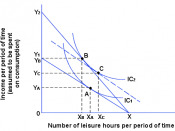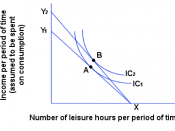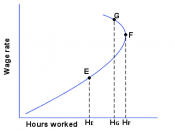Labour Economics
The current problems between Qantas and the ACTU over employment of casual labour highlight substantial changes in the composition of the Australian workforce over the past few decades and some of the resistance to it. Gone is the traditional ' cradle to grave' career. These changes have come about for a number of reasons. New technology, micro and macro economic reforms, eg. tariff reform, industrial relations reforms, standards and quality controls have all brought about significant change. Other factors influencing this process, has been the adoption of management strategies that emphasise flexibility, requiring more use of part time and casual labour.
'Full time work is defined as employment that requires workers to work 35 hours or more per week. Part time workers are those that are employed less than 35 hours.' (Healey, 1999, p.6) Casual are those that are not entitled to either annual or sick leave entitlements which permanent employees enjoy, thanks to the efforts of organised labour in the form of trade unions.
Use of more efficient mechanisation and technology has reduced the number of workers in traditional 'blue collar' areas such as low and semi skilled workers in manufacturing, and mining industries, leading to a reduction of 70,000 workers between 1988-1998. It is not only 'blue collar' workers who are affected by technology and automation. During this time, technology has led to the reduction in the finance sector of 16,200 jobs. The increasing unemployment, has led to a greater demand for fewer jobs, therefore less job security and in some cases replacement of full time with part time work. 'These shifts in employment opportunities resulted in an increase in service industry jobs to nearly 72 percent in 1997 of all employment. Hospitality and retail both have large numbers of casual and part time staff, hospitality...


